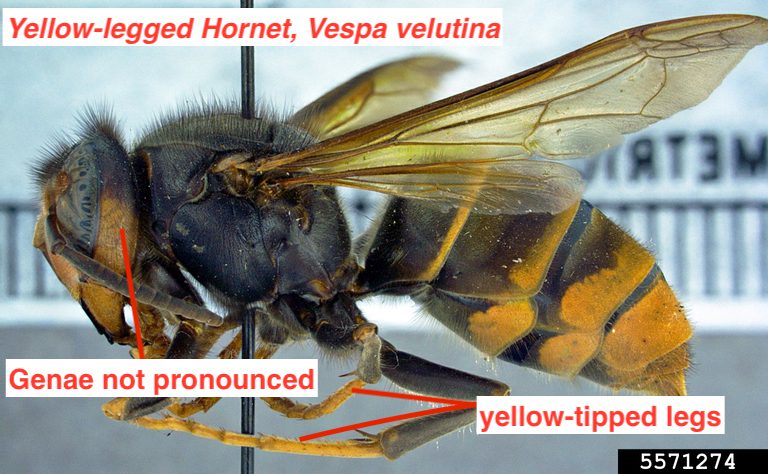An invasive yellow-legged hornet was trapped in Jasper County last week, according to Clemson University officials tasked with protecting the state’s beekeeping industry.
The hornet was captured Nov. 9, and the finding was confirmed by the USDA’s Animal and Plant Health Inspection Service (APHIS) Nov. 16. This is the first known detection of the hornet (Vespa velutina) in South Carolina, after Georgia officials reported a Savannah-area sighting in August.
While the yellow-legged hornet — not to be confused with the northern giant hornet — is no more harmful to humans than other hornets, it can have a devastating impact on both managed and wild bees.
Clemson officials are urging anyone who suspects they have spotted a yellow-legged hornet to report their findings to www.clemson.edu/public/regulatory/plant-industry/invasive/ylh.html.
“South Carolina has a robust beekeeping industry and an enthusiastic beekeeping hobbyist community. Bees are also essential to the state’s agriculture industry and the safety of our food supply as pollinators. This is why it is so important that South Carolina citizens remain vigilant and report sightings,” said Steven Long, assistant director, Clemson Department of Plant Industry (DPI).
The South Carolina detection comes after DPI’s Apiary Inspection Program — the regulatory agency charged with protecting the state’s beekeeping industry — collaborated with the Clemson Cooperative Extension Apiculture and Pollinator Program to proactively monitor Lowcountry locations through an elaborate trapping system.
While the detection does not necessarily indicate that yellow-legged hornets have established habitat in the state, hornets know no borders and the Low Country’s proximity to Savannah is giving officials cause for concern. As a result, Clemson DPI will be enhancing its current trapping efforts in the area, will work with federal officials to confirm suspected specimens and will respond to active hornet colonies if they are located.
“The yellow-legged hornet is a predatory insect that has been reported to attack western honeybee colonies and has become a serious pest of beekeeping operations where it has been introduced,” said Ben Powell, who directs Clemson Cooperative Extension’s Apiary and Pollinator program. “Establishment of this exotic pest in the U.S. would pose a significant threat to our already embattled beekeeping enterprises.”
“USDA applauds the swift response from Clemson DPI to the detection of a yellow-legged hornet in South Carolina,” said Dr. Mark Davidson, Deputy Administrator of APHIS’ Plant Protection and Quarantine Program. “APHIS has supported Clemson DPI by providing technical and financial assistance since the initial detection of this pest was first found in Savannah, Georgia. APHIS is committed to working with our state partners on the eradication of this pest. The public also play a critical role in helping to eradicate this pest by being vigilant and reporting any signs of the yellow-legged hornet.”
The yellow-legged hornet is native to Southeast Asia and has established itself in most of Europe and areas of the Middle East and Asia. The hornet builds egg-shaped paper nests above ground and often in trees. The nest can be large and house an average of 6,000 workers. This exotic hornet may be confused with several native insects, including the cicada killer wasp, the bald-faced hornet, paper wasps, queen yellowjackets, wood wasps and robber flies, but is distinguished from these other stinging insects by its larger size.
The public can visit this Clemson University publication to learn more about the hornet.
Get in touch and we will connect you with the author or another expert.
Or email us at news@clemson.edu

